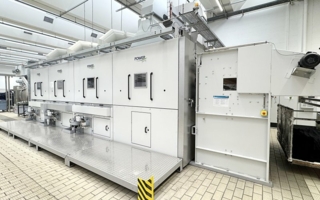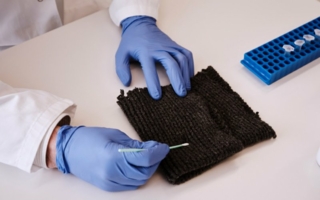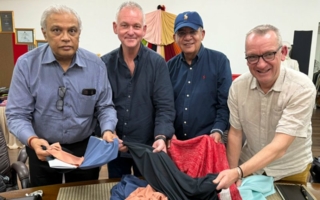27/02/2024 – Eltex of Sweden AB
Celebrating 60 years of electronic sensors
As a pioneer in the adoption of electronic sensors by the weaving machinery industry, Eltex of Sweden is marking its 60th anniversary. The company´s timeline aligns with the acceleration of weaving machine production speeds from around 150-200 picks per minute back in the 1960s to up to 1,200 picks per minute today – Eltex sensor technology has made a significant contribution to enabling today´s fault-free, high-speed production.
Modest beginnings of Eltex of Schweden AB
The electronic detection of broken or missing weft yarns during production was the problem Eltex founders Åke Rydborn and Ragnar Henriksson set out to solve with the development of the world´s first electronic weft-stop-motion. “There were no electronics experts in the mills back then and only a few working for the machine builders themselves,” remembers Alf-Gunnar Sibbeson, who has worked for Eltex for many years from 1971 onwards. “As a consequence, our servicing was very much in demand, because if problems occurred, nobody else was able to solve them.”
Expansion strategy
As exports increased, further Eltex operations were established in the USA and Ireland. Further textile milestones in weaving technology included optical arrival detectors for air-jet weaving machines at the beginning of the 1980s, and the QTV system for warp preparation, which introduced digital stop-motion control to the industry at the start of the 1990s. In 2009, the company branched out into carpet tufting, and over the years Eltex cemented its position.
Introducing “Eltex Ey ETM” and “ACT-R”
The “Eltex Ey ETM” system is developed for the continuous monitoring of yarn tension on warp beams. Not only does it eliminate problems when warping, but also in the subsequent weaving or tufting processes. It monitors yarn tension on all positions in real-time and a minimum and maximum allowable tension value can be set. If any yarn´s tension falls outside these values the operator can be warned or the machine stopped. Meanwhile “ACT-R” goes beyond yarn tension monitoring to control yarn tension. The plug-and-play system automatically compensates for any differences in yarn tension that arise, for example from irregularities in yarn packages.
In conclusion, Brian Hicks, CEO at Eltex, summarizes: “In today´s highly optimised textile production environments, yarn tension has become an important parameter in eliminating faults and ensuring premium quality at all times.” Resilience and dedication are becoming more and more important in adaption to changing environments and staying ahead of technological advancements.




